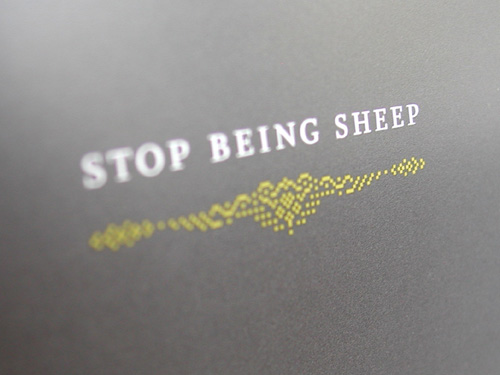In Denise Gonzales Crisp’s Towards a Definition of the Decorational (presented in MIT Press’ Design Research), Denise wonders why more design discourse doesn’t revolve around decoration and ornament. While it appears frivolous and bombastic, maybe we should take pride in it. Let’s celebrate excess, adore craft, and reflect on complexity.
Often, designers take pride in form follows function, where we strip away the ornamental and illustrative. This helps communication. Or so it seems. But can’t ornament be communicative? And what about the cultural and anthropological value of ornament? Before we answer those questions, perhaps we should start with the basics, as posed at the close of Denise’s essay: What is decoration in graphic design? What is ornament?
Deliver your responses. Show your samples. Direct us to web sites.
Denise’s Lecture on the DecoRational
If you despise decoration, state your case with just cause.










i used to have a wonderful professor who would say: be an art director, not an art decorator
decorating is a luxury. it can enhance good design, but it won't do anything for crappy work besides make it look busy. great design can stand on its own with or without decorations.
that said, for me, decoration and ornamentation is like candy. sometimes i'd get a craving for sugar and i'd raid the candy aisle. and Marian's work
is some of the most beautiful eye candy i've come upon yet.
decoration is to graphic design what spices is to food. good food doesn't need it, but just enough can make it fantastic. too much and it's unpalatable. if the food sucks, spice it to death, and it's still bad.
yes, yes, i've been guilty of decorating things to death but that's because most of the time, i do pretty straightforward, spare stuff. all that food analogy, i think it's dinner time...
On Nov.20.2004 at 09:17 PM